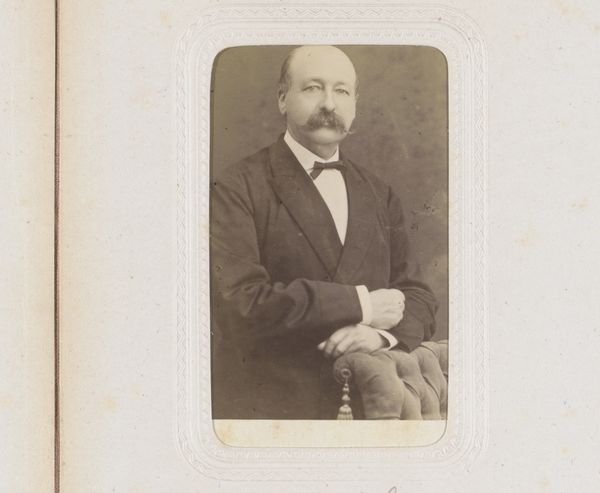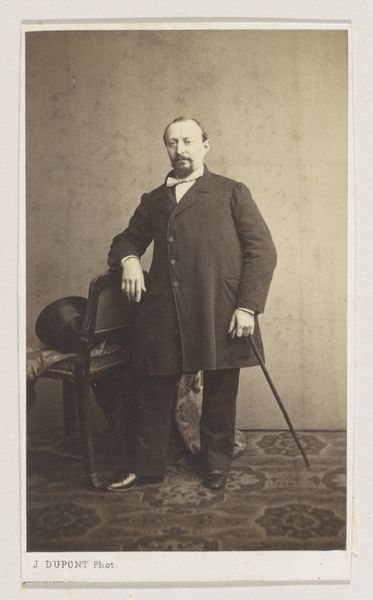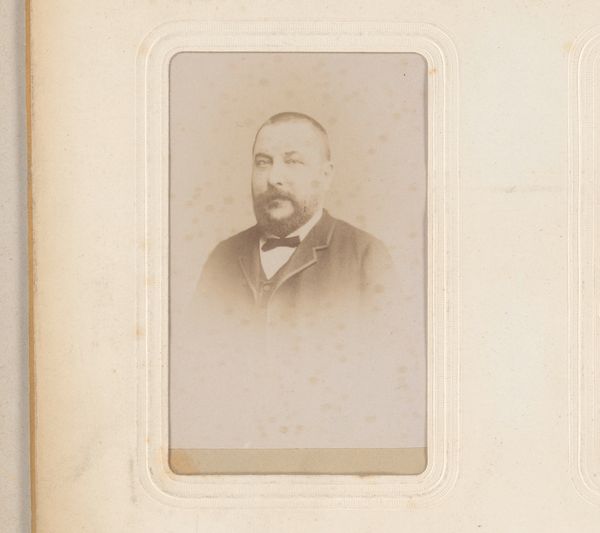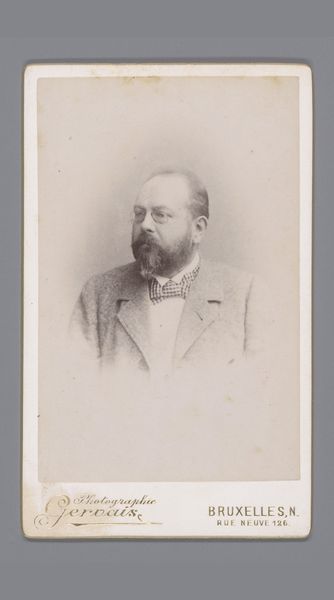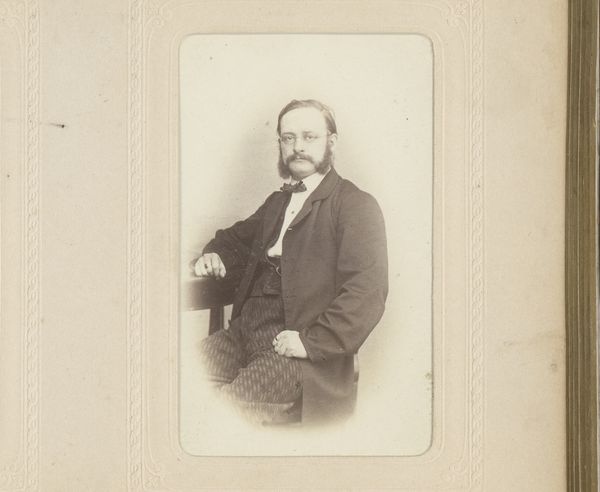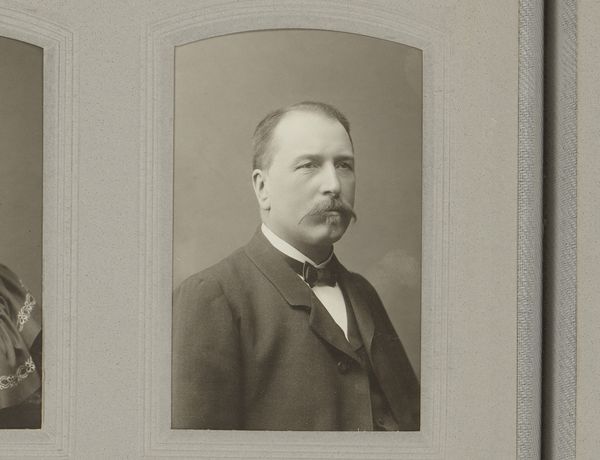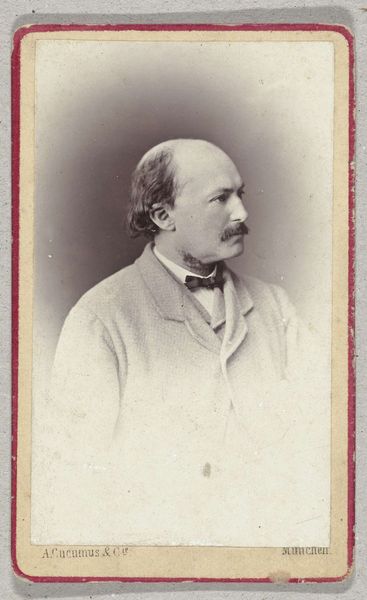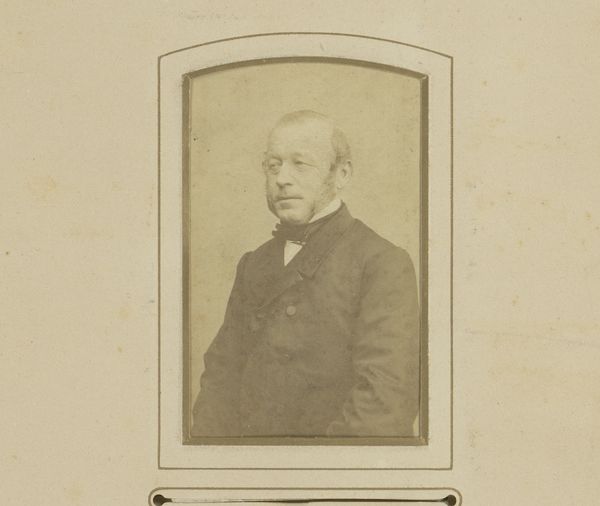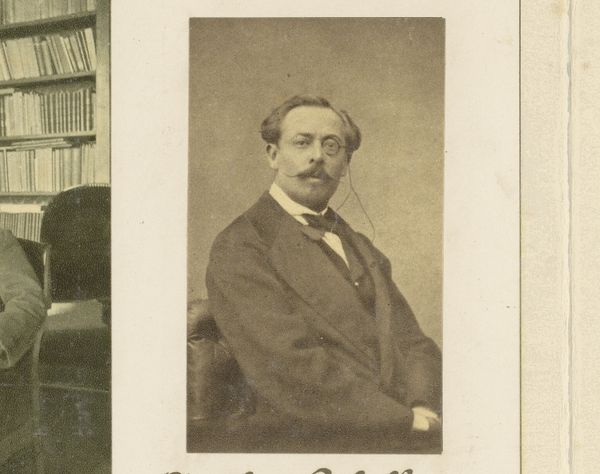
photography, gelatin-silver-print, albumen-print
#
portrait
#
photography
#
gelatin-silver-print
#
albumen-print
Dimensions: height 82 mm, width 50 mm
Copyright: Rijks Museum: Open Domain
Curator: This albumen print, "Portret van een zittende man, aangeduid als Van Opstal," attributed to P. Weijnen & Fils and likely created between 1876 and 1878, captures a moment of poised contemplation. Editor: He seems self-assured, perhaps even a little stern. The subdued tones create a very stately, old-world feel. He looks like someone of significance, and a hint of sadness emanates. Curator: Albumen prints like this became popular as a way to produce portraits quickly and affordably, and made portraits accessible to the middle class. Examining studio practices, it’s a snapshot of evolving social norms surrounding representation. Editor: That’s fascinating, because the details really speak. Note his relaxed posture, the placement of his hands, a bow tie, all carefully considered symbols of status. Even his mustache reads a kind of Victorian authority, a signifier of that era. Curator: And consider the purpose of images like this—intended for public display, family albums. The circulation of such images played a part in solidifying and communicating those norms and ideals within Belgian society. Photography was very influential. Editor: Absolutely. A photograph such as this would cement the family's name, the man’s status, and then serve as a constant reminder to future generations of this carefully constructed identity. The bow tie and crossed arms suggest a composed power that resonated, at the time, for masculinity and civility. Curator: It’s interesting how what appears to be a simple portrait becomes an index of shifting power structures and visual cultures of the late 19th century. This object has clearly acted as an important emblem for the sitter’s identity and his community values. Editor: It truly does. It really highlights how much an image, especially a portrait, could stand for a family's status, morals, and even hopes for the future.
Comments
No comments
Be the first to comment and join the conversation on the ultimate creative platform.
